You are reading this article to learn more about Haworthia cooperi care and get additional information on Cooper’s Haworthia plant.

Haworthia Cooperi Plant
Haworthia cooperi is a rare succulent. According to the University of California, the Haworthia genus has about 70 species native to South Africa.
This species is quite unlike the typical Haworthia varieties that mostly look like mini aloes with rough-edged leaves.
Instead, the Pussy Foot (yet another name for the Hawortia) has a rosette formation with surreal bulbous leaves.
The plant looks like it’s made of translucent bluish-green tinted marbles. The glass-like surface is mesmerizing.
They are small, easy to grow, and very decorative, making excellent mantlepiece plants.
People often grow the Window Haworthia in small ceramic containers to freely port around the room.
| Species | Haworthia cooperi |
| Synonyms | Cooper's Haworthia, Pussy Foot, Window Haworthia |
| Family | Asphodelaceae |
| Genus | Haworthia |
| Growth | Compact, clumping |
| Height | 0.3 feet |
| Width | 0.2 feet |
| Soil | Well-draining soil mix |
| Watering | Every 15 to 21 days |
| Light | Bright indirect |
| Temperature | Min: 68.0°F (20°C), Max: 72.0°F (22°C) |
| Humidity | Min: 40.0%, Max: 50.0% |
| Fertilizer | Every 14 days |
| Propagation | Division or leaf cuttings |
| Toxicity | Toxic to humans, animals such as dogs and cats. |
Haworthia cooperi Care
Haworthia cooperi is best suited for a temperature around 68 – 72°F (20 – 22°C). Being a succulent they can tolerate prolonged dryness but prefer a decent watering cycle to look healthy. Water every 7-10 days. They do well in well-draining soil and bright indirect light. Haworthia Cooper doesn’t like frequent repotting because of their delicate leaves. General humidity between 40-50% or lower is fine. Fertilize using a balanced liquid fertilizer of NPK 5-5-5 or 10-10-10 at 1/6 strength once a month in spring and summer.

Table of Contents
What Soil is best for Haworthia Cooperi?
Haworthia Cooperi care needs sandy soil that has excellent drainage.
The easiest way is to buy potting mix for cacti to grow Haworthia Cooperi. Add more perlite or pumice to this mix if you don’t find it gritty enough.
However, making suitable soil for Haworthia Cooperi care is easy enough.
Just combine potting soil, coarse sand, and perlite in equal parts. This mix won’t hold water for more than a split second, so perfect for our plant.
Apart from perlite, perfect for soil drainage, you can mix in activated charcoal chunks, fine aquarium gravel, or shredded bark.
These soil amendments prevent too much moisture from staying in the soil.
I try to minimize the use of fine sand and use other ingredients to get porosity.
Fine sand can sometimes steal all the air pockets around the roots.
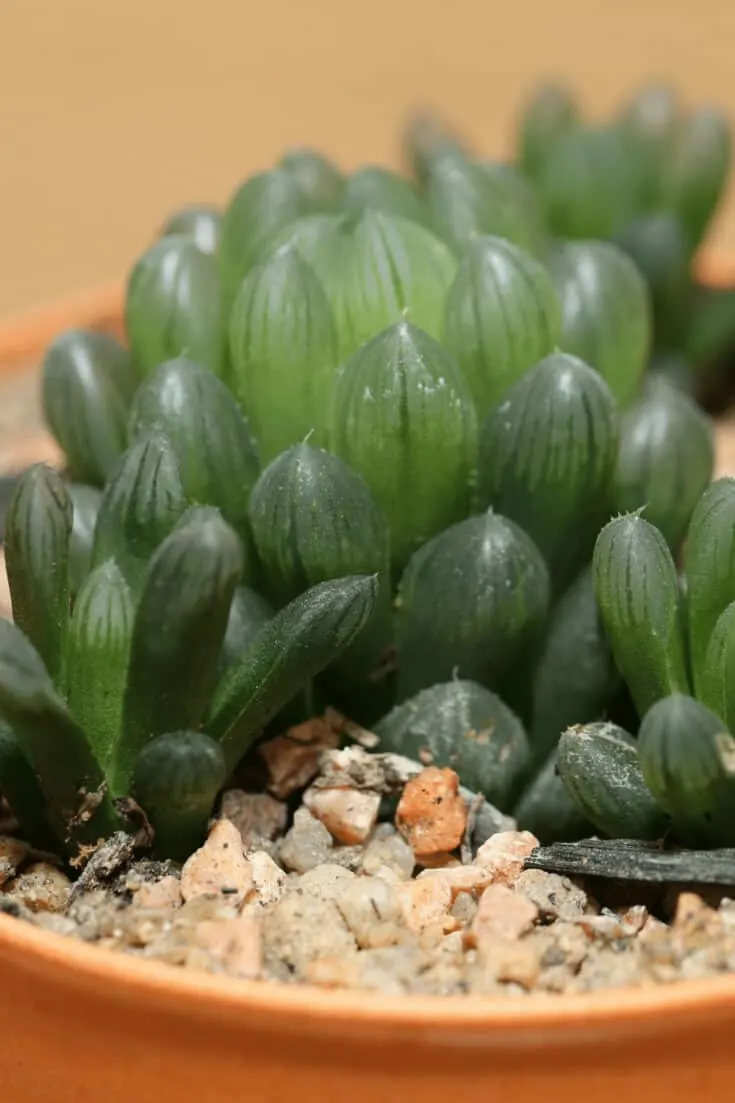
How much Light is best for Haworthia cooperi?
Grow Haworthia cooperi in bright light, but never direct or full sun.
Observe the bulbous leaves.
At the top of each leaf, there’s a green translucent window. It is through this “glass window” at the top of the leaf that light enters for photosynthesis. The window is a common feature in many succulents.
In its native habitat, the Haworthia cooperi grows underground, hidden and protected from the sun. Only the glass tops of the leaves protrude above the soil. We have to mimic these conditions in our homes roughly.
When you grow Haworthia, you won’t need to bury all the plants as long as you keep them in a shaded spot.
In my home, it sits on a bookshelf 3 feet (90cm) away from the east window, receiving slant rays in the early mornings and indirect light the rest of the day. This is its permanent spot, and I can enjoy watching the plant grow all year long.
If the light level is too low for the Cooperi, its leaves loose color.
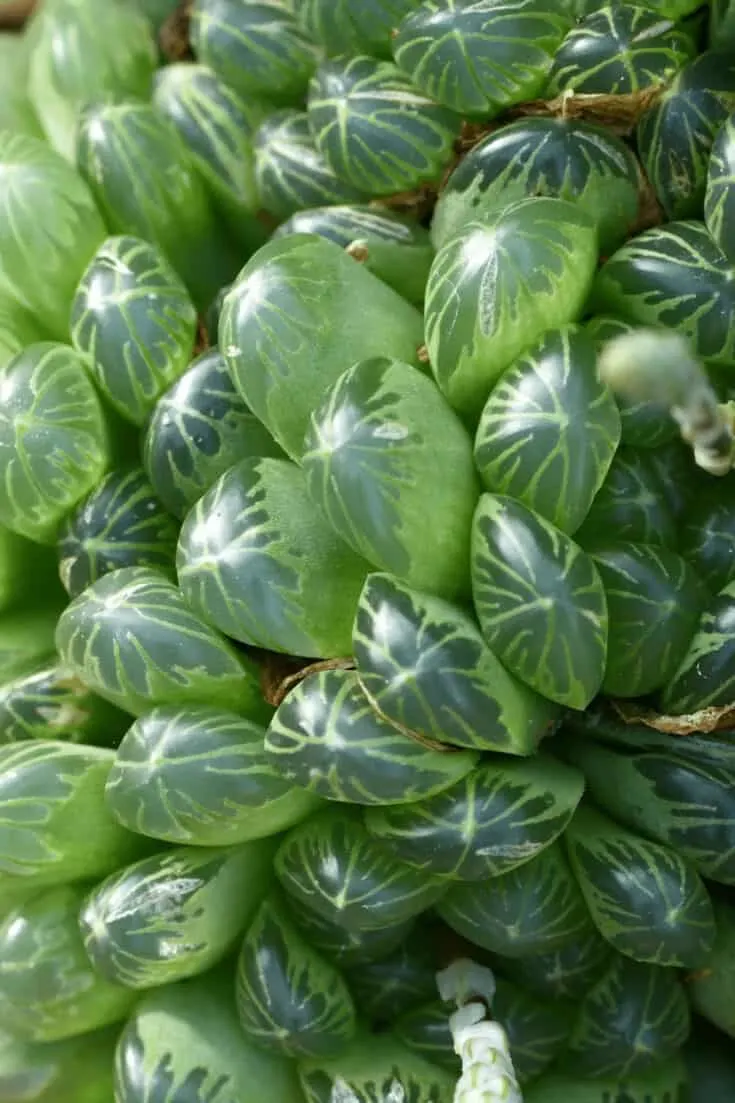
Haworthia cooperi Watering
Water Haworthia cooperi every 14-21 days in spring and summer. Water less in autumn and winter.
As you would expect from a succulent type, is not a heavy drinker.
They can survive drought if they are kept away from the sun. So if you travel a lot, you should grow Haworthia Cooperi.
That said, a consistent watering routine is always welcome.
The Haworthia Cooperi care requirements differ a little bit depending on whether you grow them outdoors in succulent containers, or indoors in an individual planter.
If the soil is right and the planter has good drainage holes, you can water regularly whenever the soil dries out completely. That’s about once a week in the summer months.
If grown indoors, You have to be a little more watchful of overwatering.
The watering cycle for homegrown plants is about 7 to 10 days.
Remember, when in doubt, don’t water. Underwatering is always better than overwatering when it comes to Haworthia Cooperi care.
In winters, you should dramatically cut back watering Haworthia Cooperi. About once a month is normally sufficient. Just make sure the water is lukewarm.
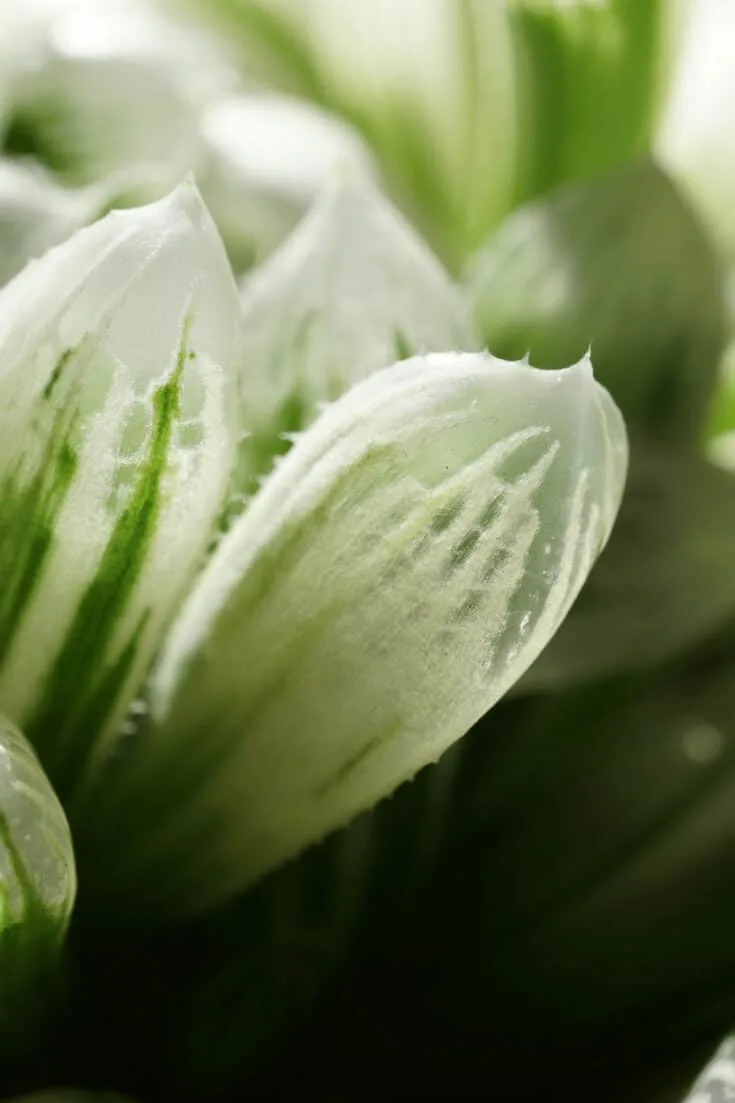
What is the ideal Temperature for Cooper’s Haworthia?
The ideal temperature for the Cooper’s Haworthia plant is 68 – 72°F (20 – 22°C). It can tolerate up to 90°F (32°C).
Ideally, the plant shouldn’t be subjected to temperatures lower than 40°F (4°C). Frost damages the plant.
This houseplant is originally from South African regions and adapted for warm temperatures all year round.
If you live in equatorial or subtropical zones, you can grow them outdoors. They can tolerate anywhere between cool to hot.
Indoors works best for this succulent because they love the consistency that ambient room temperatures can provide.
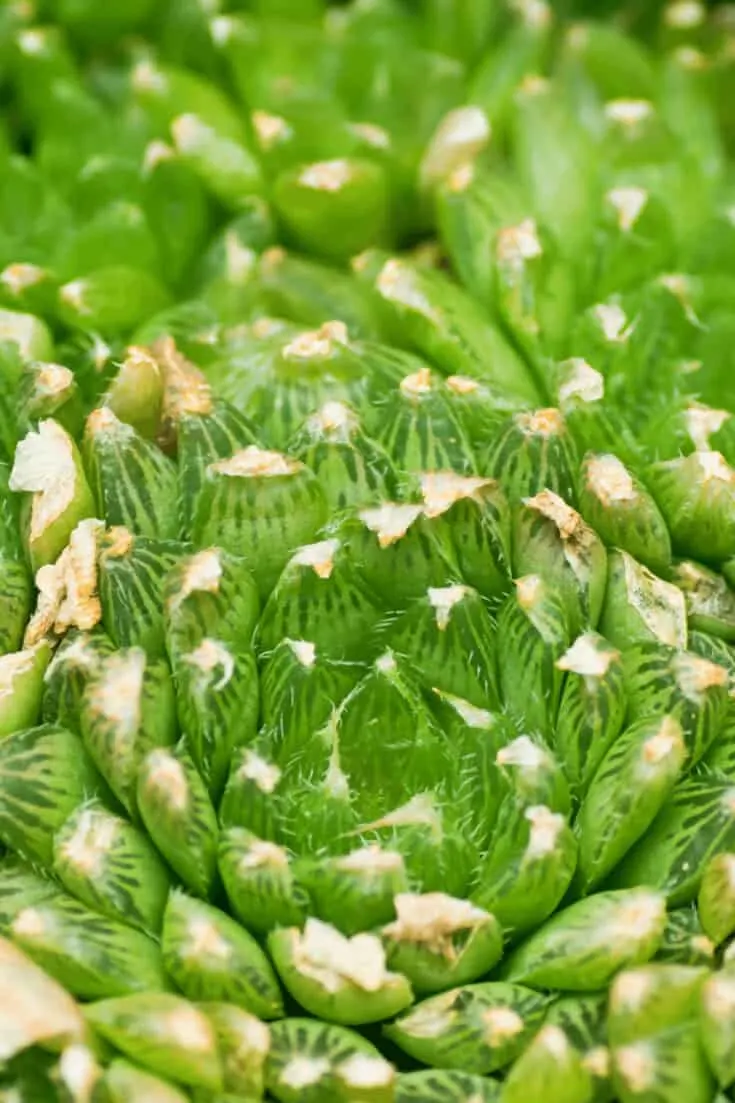
Humidity
The ideal humidity lies between 40-50%.
Good air circulation is important so the water in the soil evaporates faster and the plant stays save from root rot problems.

Fertilizer
Haworthia cooperi are low feeders. If your plant is mature, you can give it a balanced succulent fertilizer once a month in spring and summer. Dilute the fertilizer to 1/3 strength.
I mix any slow-release organic manure in the soil while potting it. In my experience, that is all it needs.
Chemicals are tricky because over-fertilization can kill these plants.
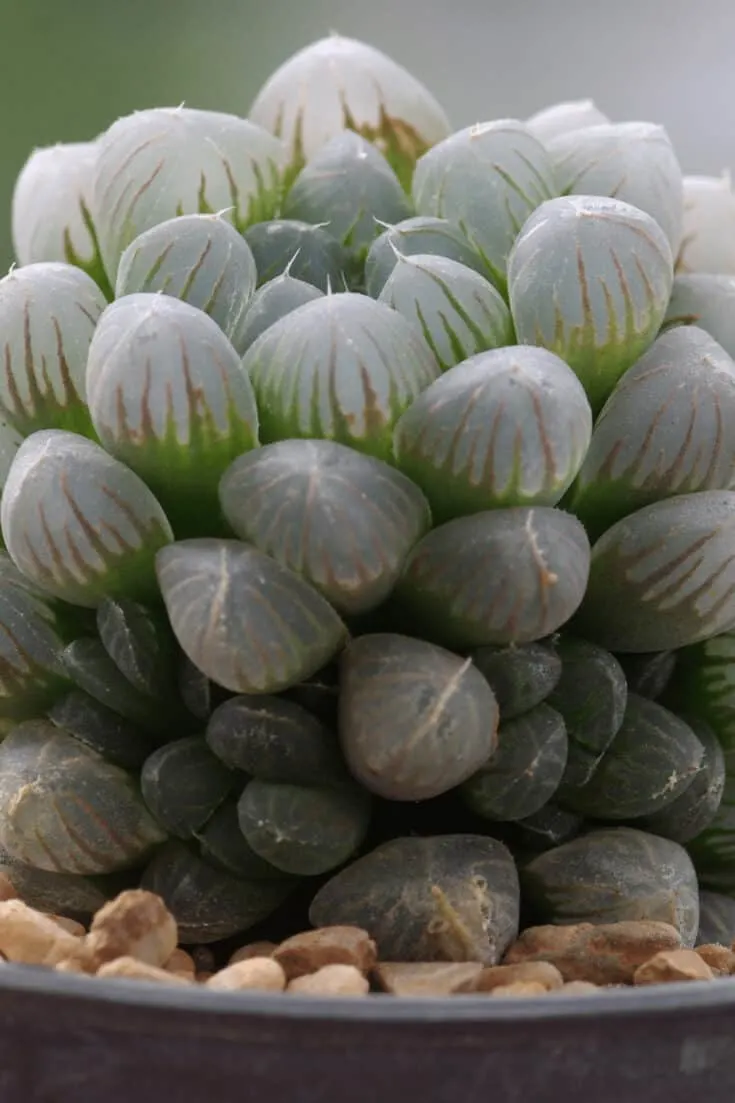
Growth
If you expect Haworthia Cooperi to grow into a sizable plant very quickly, you’re in for a disappointment.
It is a slow-growing succulent producing little clumps or rosettes of fleshy, tiny green leaves. Each rosette reaches about 2 to 4 inches (5 – 10 cm) in spread and about the same height.
But the clumps put out several pups that grow alongside the mother plant and give the plant a little more size.
The rosette formation is because the stem of this plant is very short. The leaves of Haworthia Cooperi are variegated, and that is a big part of its charm.
Potting
My favorite potting solution for Haworthia Cooperi care is terracotta pots. Terracotta pots breathe.
They are excellent for managing soil moisture and better than ceramic or plastic pots as far as succulents are concerned.
Choose a small-size container.
My rule of thumb for the ideal pot size to grow Haworthia Cooperi is an inch wider in diameter than the plant.
Let the plant grow in this pot until the rosette touches the edges. Then you can repot into a container using the same rule, i.e., an inch larger than the plant.
There are ceramic pots that are so shallow they look like soap dishes.
Although people recommend using shallow pots for succulents, I do not like them.
The ideal depth to grow Haworthia Cooperi is a pot a little taller than the plant’s height.
Haworthia cooperi Flower
Hawortia cooperi produces small, tubular white or pale pink flowers on long, slender stalks. It takes 2 years for Hawortia to reach maturity and be able to flower. They flower once a year in summer and autumn.
Haworthia Cooperi Step By Step Guide to Propagation
You can quickly grow Haworthia Cooperi from a leaf or stem cuttings. Haworthia Cooperi propagation can be carried out in soil or water but I’ve had better success in soil. The cuttings are prone to rot in water. Spring to summer is the best time to propagate Haworthia Cooperi.
Haworthia cooperi plants are super easy to propagate. They take root from stem cuttings or fallen leaves.
You can even harvest offsets that spring up abundantly at the base of the plant. The plant propagates reliably with a high success rate.
Leaf propagation in soil
Cut a few healthy leaves from the soil end of a bug-free mother plant, taking care to cut under the node.
Let is lie on a surface for half a day until a callus is formed on the cut. This is an important step in Haworthia Cooperi propagation to minimize the chances of rotting.
Pop the leaves 2 inches apart in a sterile moist soil mix. A potting soil, like a mix of succulent soil, peat moss, and perlite, is simple and reliable for rooting.
Don’t press down the soil around the stalk. Let the cut end simply contact with the moist soil.
The soil moisture should be maintained but not wet because your leaf will rot away. Water in the morning with handheld spraying or misting can once every two days, and keep the tray in a shaded spot.
Don’t cover the tray with plastic; the leaves will catch mold. Don’t disturb the cuttings until established.
New plants will grow from the leaf base in six to eight weeks. After they have about two leaves each, transplant them carefully into individual pots.
Water propagation
Water propagation of Haworthia Cooperi is more or less the same, except that you put the leaves in water instead of soil. I prefer a slight variation to this.
Place a thick wad of sterile cotton wool inside the cleaned lid of a jam jar. Pour water until the cotton wool is soaking wet.
Stick the callused stalks of your Haworthia Cooperi in the cotton wool while the leaf rests along the edge of the lid. Keep the cotton wool moist but leave the set up undisturbed for a few weeks until you see translucent roots.
After the root structures are strong enough to transfer them to individual pots.
Offset separation
This is a natural Haworthia Cooperi propagation method. As the plant matures, it throws multiple offsets or pups around its base. I normally leave them on the mother plant and let them grow together until it’s time to repot the plant.
When repotting, I carefully separate the pups from the mother plant. These offsets are typically joined at them. You have to cut that joint with a sharp, sterile knife. The leaves may fall off if you’re not careful.
I ensure I get a few roots along with the offset to help the new plant establish itself quickly.
Potting best practices to grow Haworthia Cooperi baby plants
The pots can be 2.5 inches (6 cm) in size and will serve the plant for six months. Don’t forget to put a layer of gravel at the bottom to make reporting easier.
Once they’re in their pots, young plants need regular watering until they’re about six months to 1 year old. Make sure the potting mix combines succulent soil, peat, and perlite in equal parts to ensure moisture.
You can cut back on watering once the plant has grown.
Common Problems With Haworthia Cooperi
Haworthia Cooperi is, by and large, a hardy succulent and isn’t prone to pests or diseases. However, there are a few things you need to bear in mind.
Root rot
If the plant is dislodged at the base then that’s due to root rot. Fungal diseases are the most common root rot cause when growing Haworthia Cooperi.
It occurs when roots sit in soggy soil, particularly in low light conditions and poor ventilation. You can try to salvage a few leaves and carry out leaf propagation. Readjust watering and light conditions.
Mealybugs
Sometimes all of a sudden, the leaves fall off the stem and reveal white fuzzy little pests hiding at the nodes. This can be a frustrating problem if the pest attack is not detected early.
If you spot one or two, touch the bug with an earbud dipped in alcohol. Spray insecticidal soap and neem oil solution every 15 days.
If it’s a heavy infestation, you’ll need to carefully wash off the plant until all the bugs are gone. But this may damage the plant severely.
Fungus gnats
These occur in the top one inch of the soil if moisture is not managed optimally. Be sure to let the soil dry out completely before watering.
Tips to Keep Haworthia Cooperi Problem-free
The most critical aspect of Haworthia Cooperi care is ensuring the right amount of water because root rot is the most common reason for death. Here are a few handy tips to keep it problem-free:
- Minimum watering and medium lighting
- Young plants need more watering than older plants
- Don’t repot too frequently, for that can damage the plant.
- Haworthia cooperi care does not involve any particular humidity management.
- Good air circulation is a must to dry out moisture
- The optimum temperature to grow Haworthia Cooperi is room temperature
- Don’t expose it to cold drafts or direct sun; outwinter the plant indoors.
- Grow Haworthia Cooperi in terracotta pots
- Keep checking for pests and bugs proactively. Pests multiply fast on Haworthia Cooperi plants due to their succulent nature.
- The application of preventive insecticidal soap once a fortnight isn’t a bad idea
Hawortia Varieties
Some popular Hawortia varieties are:
- Haworthia obtusa
- Haworthia attenuata (Zebra Plant)
- Haworthia fasciata (Zebra Cactus or Pearl Plant)
FAQ
Why is my Haworthia cooperi turning brown?
This could be due to exposure to direct sunlight, which makes the leaves of Haworthia Cooperi change color. Move to a bright shaded spot, and the damage will reverse at least partly.
Can I grow Haworthia cooperi in a somewhat dark spot?
All plants need light to produce food, which also goes for Haworthia Cooperi. It prefers shade over direct sun. But darkness is different from the bright shade. In prolonged darkness, the plant will slowly fade and eventually even die.
Conclusion
I’ve always maintained that there are two kinds of gardeners: those that love succulents and cacti and those that don’t.
If you are the former kind, Haworthia Cooperi is an exotic succulent you want to own.
They even make a great choice for multi-plant container gardens where you can mix and match a few varieties of succulents and make living works of art.
Happy Gardening!

Daniel has been a plant enthusiast for over 20 years. He owns hundreds of houseplants and prepares for the chili growing seasons yearly with great anticipation. His favorite plants are plant species in the Araceae family, such as Monstera, Philodendron, and Anthurium. He also loves gardening and is growing hot peppers, tomatoes, and many more vegetables.


